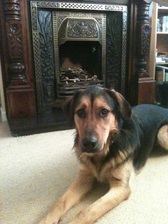
We had a surprise visit from Sonya O'Sullivan this week. She dropped in with her daughter to see how Hector was getting on with his training. She was very impressed at how mature he looked.
At this stage I have now started attachments. I ask one of my colleagues to play the role of a child. Tara kindly agreed to be my child in the photo below and she is attached to Hector using a belt around her waist and an attachment lead attached to Hector’s jacket. We start nice and gently asking Hector to do his work with two people on either side of him. Gradually I ask Tara to overstep the kerb or drop the handle and run and as she does so I give Hector instructions. Tara will also do typical child behaviours such as skipping, tapping, picking up sticks and waving them. Gradually I will ask her to do more intense behaviours such as turning and shouting. I will see how Hector copes with these.
After a few weeks I will attach a child to Hector. I use my young niece and nephew for this along with some of my colleague’s relations. The children will do more natural child behaviours and can be more unpredictable. The dogs also will have no respect for the child so I need to be sure that they behave themselves and will not try to take advantage. After another few sessions I will attach Hector to a child with Autism to get the most realistic experience.
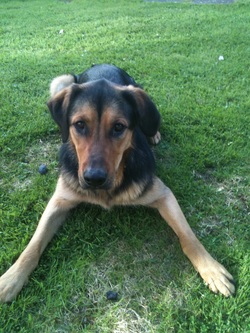
Over the 11 weeks I will take each of my 5 dogs home individually for a
couple of nights. I took Hector
home for a couple of nights to see how he settled in and to see if he had developed any bad habits like chewing, crying, barking or landscaping. It was also a good way to see how he behaved while travelling in the car. He was very well behaved and we had a few fun play sessions. He is still fond of chasing his tail!
I have also started looking at the matching process where by I match Hector to a suitable family. I will update you on this process soon.
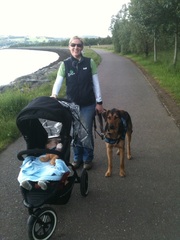
I started pushing Hector a little more this week to test his work. Examples of this are when I overstep the kerb to see if he will stop. I also work in a number of different environments to test for different reactions and consistency in this work.
Country – to see how he copes with country walks, livestock, lack of footpaths.
Suburban – to see how he copes with his straight line work, kerb work, dog and cat distraction
Urban - to get him used to busy environments, traffic, public transport, increased noise levels. Things that can upset a dog in training vary but they include statues, balloons, shadows, masks, strange noises, steps or platforms with a glass drop off or where you can see through the stairs.
Many of our families have young children. I work with buggies and shopping trolleys so that the dogs can learn to work close to these without becoming over aware or scared. And to learn how to avoid getting clipped by the wheels.
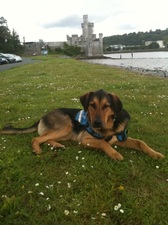
Outdoor obedience can be a bit more challenging than indoor obedience as the surroundings are often much more exciting. Areas like the river walk are good to see how he copes with cyclists, runners, roller bladders and children of all ages.
At this stage in Hector’s training I do not use food rewards as he does not need them, with the exception on free run. I use it intermittently on free run to reward a good recall response. However it is important to know that he will refuse food until given permission to take it and that when he does take it, he does so very gently. I will be working on other food refusal work to see if he tries to take any food from food stalls or off the ground. The dogs are just at buggy level so I have to watch that he does not try to take a lick of a child’s dripping ice cream as they go by or swipe a biscuit from their hand. Dogs are opportunists so they will chance it if they think they will get away with it.
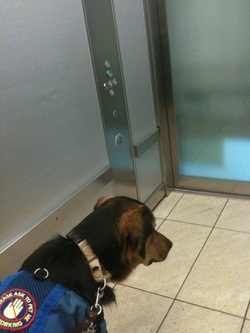
I work a lot in shopping centers getting the dogs used to the noise levels and getting them used to
children’s rides. These can be a little bit scary for dogs especially if they go off intermittently when we are walking by. The dogs have to be very well behaved indoors and need to learn how to behave when approached by the public. I have a sign on the dog’s jacket stating, please ask to pet me.
Some of the families will encourage social interaction for their child so
the dog needs to be well behaved.
Some of the children with Autism particularly those with hearing sensitivity will not want to stop and talk about the dog (or allow their parent to talk about the dog) so it is important to know how to get the dog to ignore public attention. Other areas I work on in the shopping centre are: trolley work, lifts, stairs, food refusal, fitting into a changing cubicle or toilet and hand dryers.
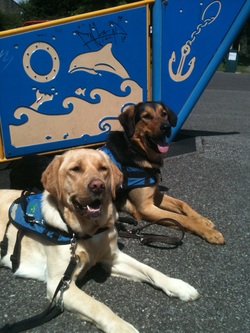
Keela and Hector in the playground.
I do a lot of work in Café’s and restaurants to be sure that Hector is well behaved. There should be absolutely no begging from the table, no attention seeking and no hovering of the floor or licking the table legs clean. He should lie down quietly until such time as he is asked to get up.
I do a lot of work getting the dogs used to people stepping over them so that they do not pop up every time somebody moves. They also need to be good around toddlers who will often unintentionally prod or poke them or pull their hair/tail.
Playgrounds. I do a lot of work in playgrounds getting the dogs used to being obedient in highly intense areas. There can be a lot of high pitch laughing, crying, screeching which can be exciting for the dogs. I teach the dogs how to behave when approached by children and I use benching as a tool to help manage the dog and the child at the same time. This is a form of tethering where the dog is tied to a secure area such as a park railing or bench. I control the dog then using my voice and body language. This can be used in other areas such as by the Lough when feeding the birds. The Lough is particularly good area to train for bird and dog distraction. The birds are very protective of their young and can get quite nasty if you go too close so the dogs have to know how to cope with this and will do so by getting security from the handler.
Until next time....


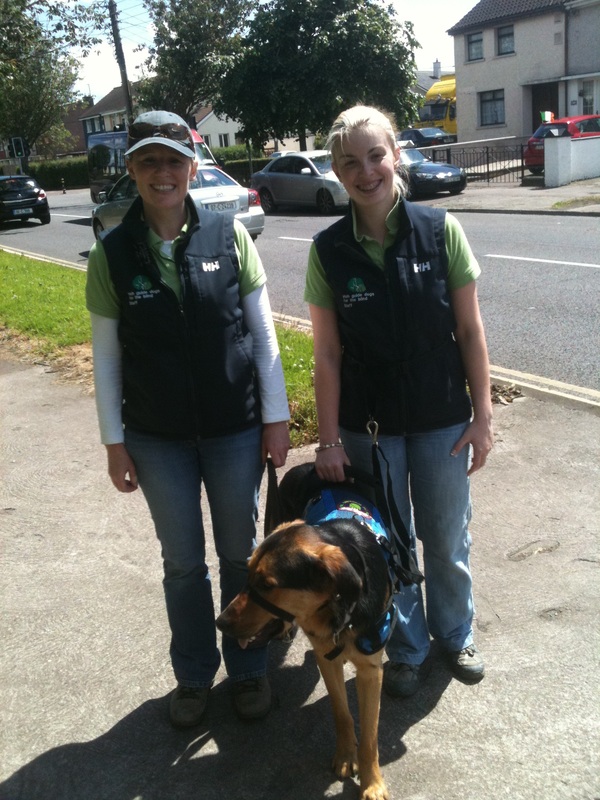
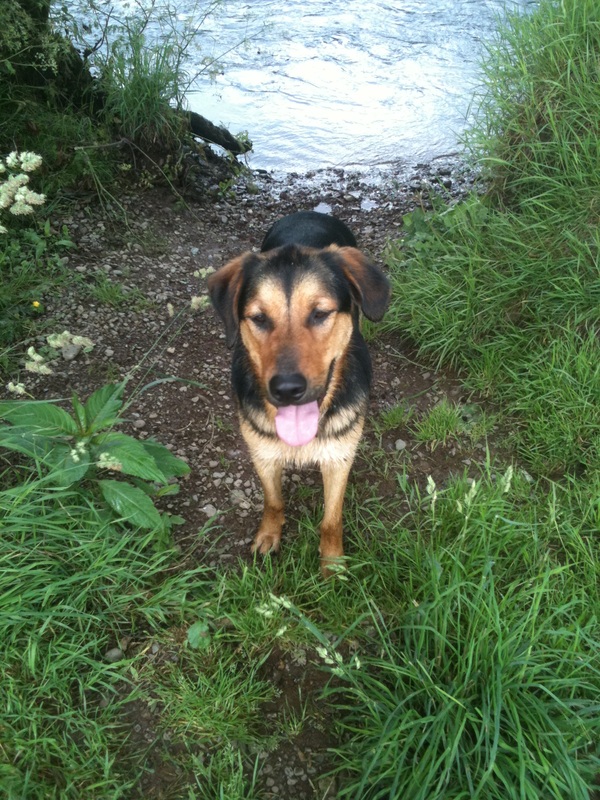


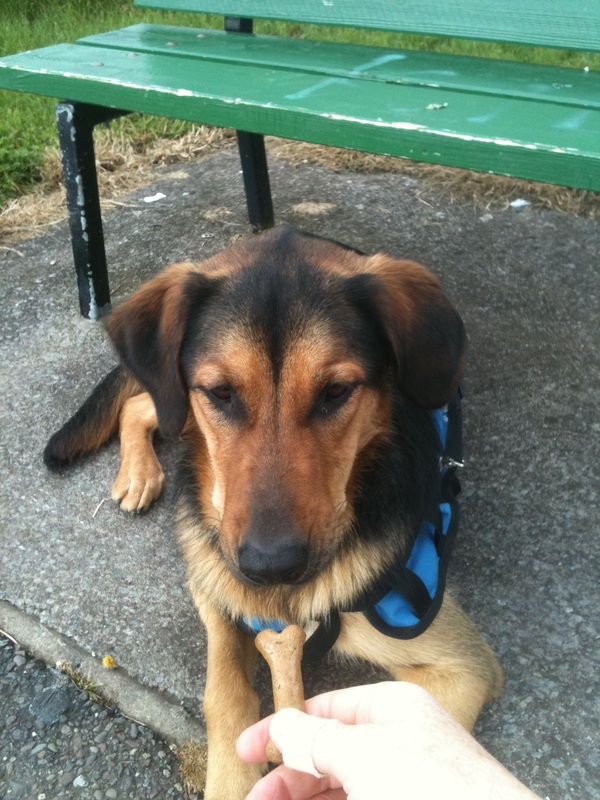


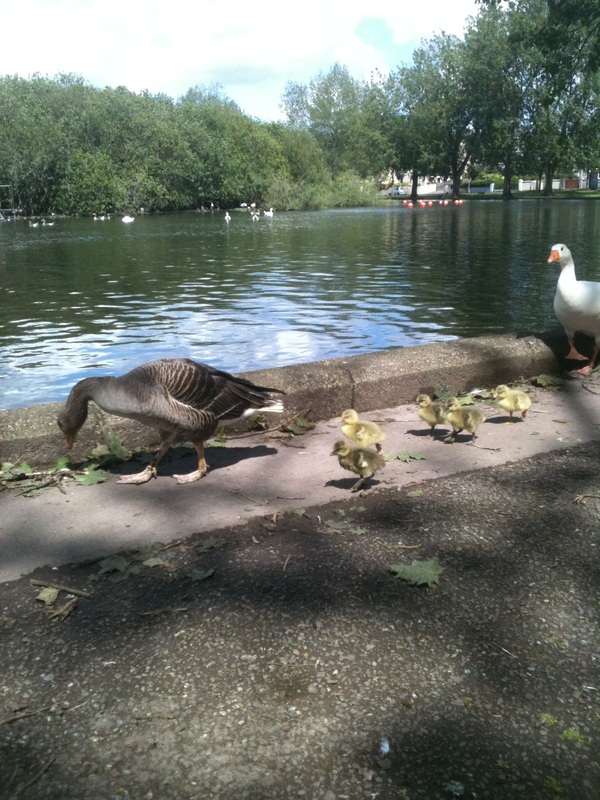
 RSS Feed
RSS Feed
